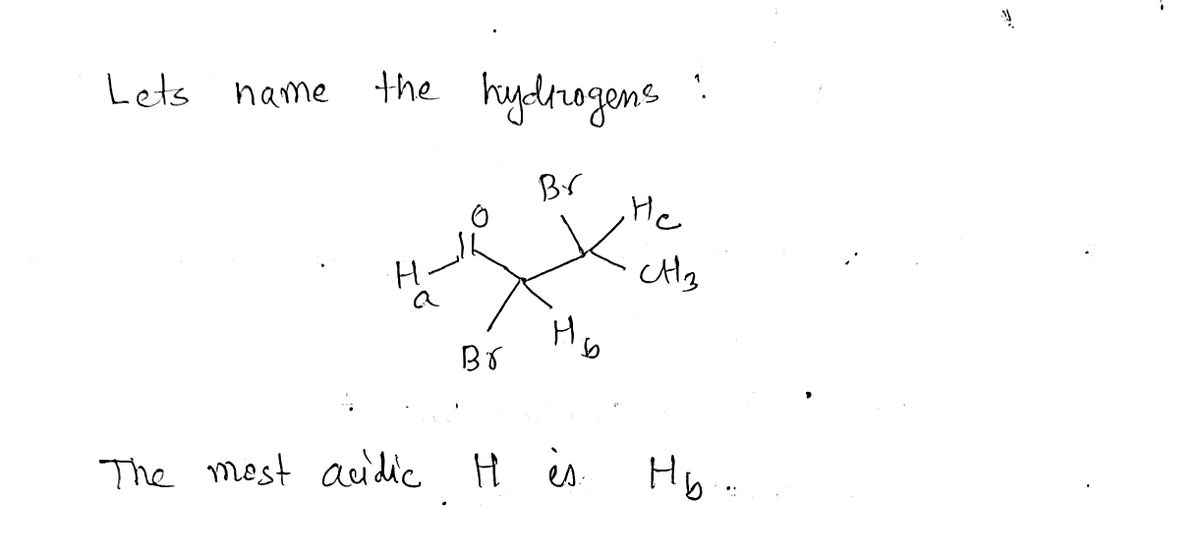Chemistry
10th Edition
ISBN:9781305957404
Author:Steven S. Zumdahl, Susan A. Zumdahl, Donald J. DeCoste
Publisher:Steven S. Zumdahl, Susan A. Zumdahl, Donald J. DeCoste
Chapter1: Chemical Foundations
Section: Chapter Questions
Problem 1RQ: Define and explain the differences between the following terms. a. law and theory b. theory and...
Related questions
Question
Predict the product of the reaction below and draw one additional resonance structure for this product.

Transcribed Image Text:**Chemical Structure and Acidity Analysis**
The image depicts a chemical structure of a compound featuring several hydrogen atoms, each colored differently. The atoms are arranged as follows:
- **Carbonyl Group (C=O):** The double-bonded oxygen is attached to a central carbon atom.
- **Bromine Atoms:** Two bromine (Br) atoms are attached to the central carbon atom.
- **Hydrogen Atoms:**
- A green hydrogen atom is attached to the carbon with one of the bromine atoms (Br).
- A blue hydrogen atom is attached to an adjacent carbon atom, which also has a methyl group (CH₃).
- A red hydrogen atom is attached to the same carbon as the green hydrogen atom.
- **Methyl Group (CH₃):** Attached to the same carbon as the blue hydrogen atom.
**Acidity Consideration**
The task involves determining which of these hydrogen atoms is the most acidic. In general, acidity in organic molecules is influenced by the stability of the conjugate base formed after the hydrogen is removed. Factors such as electronegativity, resonance, and inductive effects contribute to this stability.
- **Green Hydrogen (attached to Br):** Potentially influenced by the neighboring bromine atom through inductive effects.
- **Blue Hydrogen (next to CH₃):** Experiences less electronegative influence.
- **Red Hydrogen (next to Br):** Similar inductive effects as the green hydrogen, also influenced by the carbonyl group.
Consider these effects to evaluate the acidity of each hydrogen atom in the compound. The most acidic hydrogen is typically the one whose removal results in the most stable conjugate base.
Expert Solution
Step 1

Step by step
Solved in 2 steps with 2 images

Knowledge Booster
Learn more about
Need a deep-dive on the concept behind this application? Look no further. Learn more about this topic, chemistry and related others by exploring similar questions and additional content below.Recommended textbooks for you

Chemistry
Chemistry
ISBN:
9781305957404
Author:
Steven S. Zumdahl, Susan A. Zumdahl, Donald J. DeCoste
Publisher:
Cengage Learning

Chemistry
Chemistry
ISBN:
9781259911156
Author:
Raymond Chang Dr., Jason Overby Professor
Publisher:
McGraw-Hill Education

Principles of Instrumental Analysis
Chemistry
ISBN:
9781305577213
Author:
Douglas A. Skoog, F. James Holler, Stanley R. Crouch
Publisher:
Cengage Learning

Chemistry
Chemistry
ISBN:
9781305957404
Author:
Steven S. Zumdahl, Susan A. Zumdahl, Donald J. DeCoste
Publisher:
Cengage Learning

Chemistry
Chemistry
ISBN:
9781259911156
Author:
Raymond Chang Dr., Jason Overby Professor
Publisher:
McGraw-Hill Education

Principles of Instrumental Analysis
Chemistry
ISBN:
9781305577213
Author:
Douglas A. Skoog, F. James Holler, Stanley R. Crouch
Publisher:
Cengage Learning

Organic Chemistry
Chemistry
ISBN:
9780078021558
Author:
Janice Gorzynski Smith Dr.
Publisher:
McGraw-Hill Education

Chemistry: Principles and Reactions
Chemistry
ISBN:
9781305079373
Author:
William L. Masterton, Cecile N. Hurley
Publisher:
Cengage Learning

Elementary Principles of Chemical Processes, Bind…
Chemistry
ISBN:
9781118431221
Author:
Richard M. Felder, Ronald W. Rousseau, Lisa G. Bullard
Publisher:
WILEY